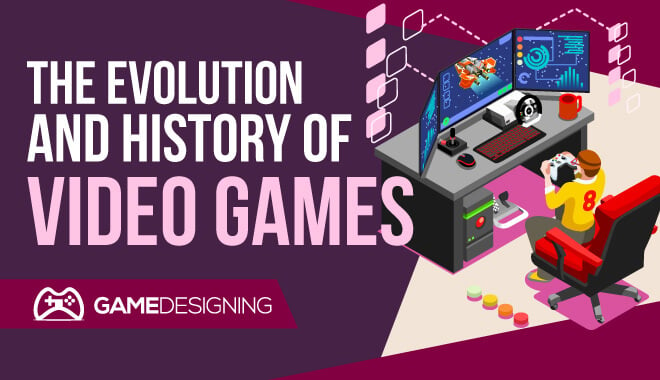
I just finished playing the Joan of Arc campaign in the new Age of Empires II Definitive Edition that was recently released. It reminded me of some truly great gaming moments I experienced growing up with the first version. That got me thinking: how did we get here?
No, not us, not humanity. That’s a whole different article entirely. I’m talking about video game history. Day one stuff.
What started it all? What allowed me to play Joan of Arc and her French compatriots during the Hundred Years’ War?
The evolution of video games is a rather recent phenomenon in our history. Only a true gamer would know what I am about to tell you, so let’s get this history lesson started.
Timeline of Video Game Evolution
Year | Event |
1950s | The Birth of Video Games |
1962 | Spacewar! and the Birth of Modern Gaming |
1970s-1980s | The Rise of Home Gaming and the Golden Arcade Age |
1983-1985 | Gaming Crisis and the Legend of E.T. |
1985-1995 | NES Revolution and Iconic Franchises |
1990s | SNES and PlayStation Era |
1996-2000 | N64 and PlayStation 2 |
Early 2000s | Microsoft Enters and World of Warcraft |
2006 | The Wii and Motion-Based Gaming |
Present - | The Era of Diversity and Cross-Platform Play |
Who Invented the First Video Game?
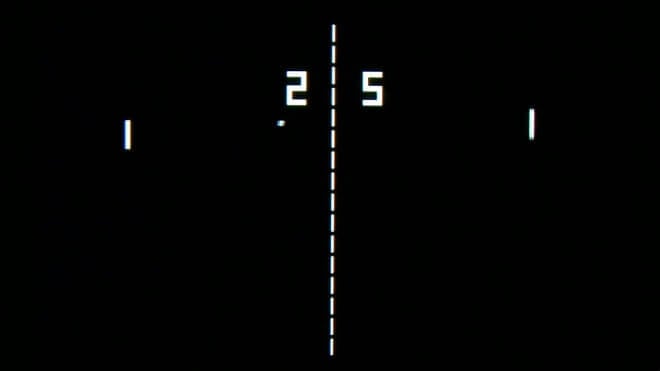
I think it isn’t entirely unreasonable that the first video game ever was Pong. We all love and appreciate Pong. Pong is often cited as one of the first widely released games for Atari, so it gets a lot of limelight.
The first real video game wasn’t invented by the talented team at Atari headed by Nolan Bushnell. No, that honor belongs to William Higinbotham.
In the 1950s, Higinbotham created Tennis for Two. Higinbotham created this game as a fun diversion, to show the power of technology.
Like many in history, he didn’t fully grasp the significance of his foray into video gaming.
What followed was ‘Spacewar!’ a game developed by Steve Russell in 1962 at the Massachusetts Institute of Technology, (MIT). This was a two-player game in which both players faced off in an intense dogfight, each player controlling either the ‘wedge’ or the ‘needle’. The game included gravity effects and faster-than-light travel.
It sounds like a current-generation game, doesn’t it?
What Was the First Game Console?
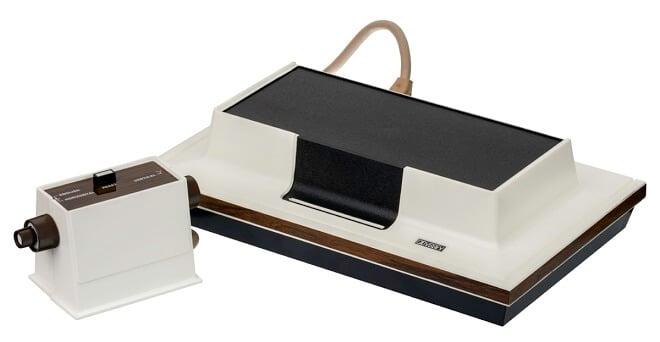
Today we have a great slew of options for video gaming fun. We all know Xbox and PS4, but what about the very first console?
That honor belongs to the Magnavox Odyssey, invented by Ralph Baer. Being able to play video games in one’s home; the idea was revolutionary. I believe that we may take it for granted today, but people used to have to journey to the local arcade, pizza parlor, or bowling alley to play their favorite games.
Leave the comfort of my own bed?
No thanks!
The Golden Age of Arcade Games
Speaking of arcade games, the late 1970s and early 1980s experienced an impressive boom in arcade video game popularity, bringing in serious commercial success.
Specifically, the release of Space Invaders for arcade systems in 1978 marked a new dawn for games. If you don’t know Space Invaders, what rock have you been living under?
This simple, yet addictive game features the player as a lone gunner ship occupying the bottom of the screen. The top half has the titular space invaders encroaching on the player, increasing in speed as their numbers dwindle. This frantic speed was surprisingly unintended, as the game developer had trouble programming them to maintain a consistent speed. He kept it in the game and the rest is history.
Can you imagine if the alien invaders just kept their normal, slow pace the entire time? Not only would Space Invaders be super easy but there would be no stakes to play for. It would be a boring exercise to merely shoot enemies. Instead, we have an adrenaline-filled defense of the earth.
Arcades were filling up with players, and some serious money was coming in. After the millions in quarters earned by Space Invaders, it wouldn’t be long until a successor in the most-played arcade game mantle was once again taken up by a new contender.
This was in the form of the beloved Pac-Man.

In each level, the player must navigate through a maze without dead ends, chomping all of the white dots, mixed with fruit, for points.
Sounds easy enough, right?
The entire time the player is hounded by colorful ghosts, hellbent on killing Pac-Man. The player has an opportunity for revenge, for if they get one of the bigger dots located at the corners of the maze, they can get revenge on the ghosts: they become vulnerable and can be eaten for extra points.
Pac-Man was an international hit and spawned multiple spin-offs like Ms. Pac-Man.
You Should Know
Pac-Man used to be called “Puck-Man” when it was created by Toru Iwatani. The name was later changed when the game was brought to the United States to prevent potential vandalism changing the “P” to an “F.”
The inspiration for Pac-Man’s design came from a pizza with a slice missing. This iconic shape made it easier to animate and allowed for character expression.
Interestingly, Iwatani designed the game with the intention of appealing to a broader audience, particularly women. The game’s friendly, non-violent gameplay and colorful graphics were specifically crafted to attract female players, making it one of the first video games to consciously target a diverse player demographic. This approach contributed to Pac-Man’s universal appeal and its status as a gaming classic.
Trouble in Gaming Paradise
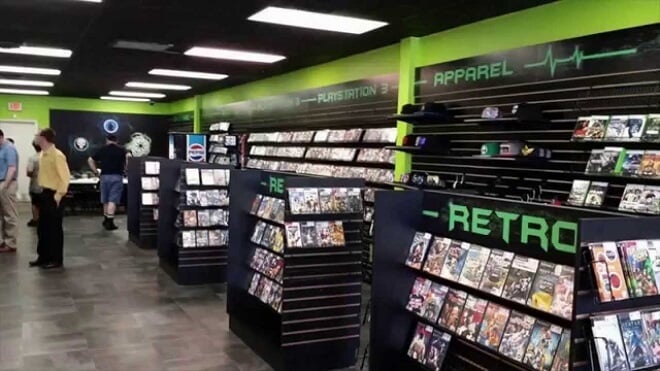
As revolutionary as those arcade games were, the gaming industry was facing a crisis: the market was being saturated, making sales and development suffer. The rise of PC gaming also made arcade games less interesting to many consumers.
Was this to be the end of video games as we know them? It sure seemed like it.
From 1983 to 1985, the sheer volume of gaming options seemed to be muscling out arcade games, which experienced over 1,500 closures, not to mention seriously suffering economic setbacks.
There is that famous rumor that Atari had all of their remaining copies of the abysmal E.T. the Extraterrestrial buried in a New Mexico landfill. It became an urban legend, often being repeated as a humorous, but a cautionary tale. Turns out that it was partially true; a Canadian film crew traveled to the landfill, excavated and found copies of E.T., as well as other discarded Atari cartridges.
Serious analysts and economists were pessimistic when evaluating gaming’s future.
Was it to be a one-time fad?
Luckily for us, the development of video game consoles like the Nintendo Entertainment System (NES), gave the market a big boost.
If the gaming markets weren’t aided by these different factors, you might be filling your cart with Steam sale items and playing the newest Call of Duty Modern Warfare. Perish the thought!
The NES, Accessories, and The Legend of Zelda
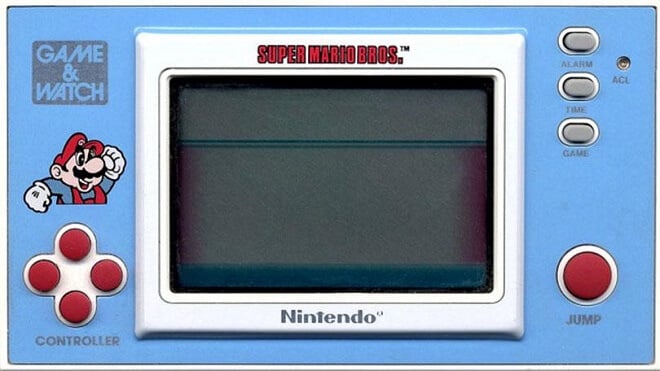
The NES was a best-selling console, producing games from 1985 to 1995. The first releases were Donkey Kong, Donkey Kong Jr., and Popeye. The NES was also revolutionary for including multiple accessories with the console, enhancing the already new and appealing gameplay.
Some of you may remember Duck Hunt—the game where you need to shoot ducks with a light gun. This was called the ‘Zapper’ and was released as an accessory in 1985. This allowed the player to feel as if they were shooting their prey on screen. Just remember to hit 100% of the time, or else that pesky hunting dog will laugh at you!
With the NES pulling some seriously heavyweight, the designer of Donkey Kong, Shigeru Miyamoto, really got a chance to shine.
In 1987, Nintendo released The Legend of Zelda.
This is the first appearance of our silent protagonist, Link, as he slays baddies and completes his quest. Miyamoto was inspired by his love of nature, as well as the adventuring he would do as a child. He harnessed his imagination and created one of the most beloved franchises in video gaming.
Any idea of how many Zelda games there are? Probably around 8 or something, right? How about 19 in the main series, not even mentioning the spin-offs and appearances in the Super Smash Bros. series?
The Legend of Zelda: Ocarina of Time was extremely influential to me as a video gamer. It inflamed my imagination, something that Miyamoto set out to do so many years ago.
The SNES and PlayStation
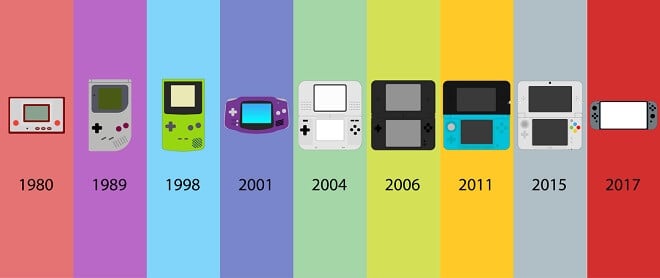
The Nintendo Entertainment System established Nintendo literally as a household name. They doubled down and released their follow-up console, the Super Nintendo Entertainment System in 1990.
This is where Nintendo dominated the games market.
SNES is perhaps the most iconic gaming system ever released. While still using cartridges, the SNES upped the ante with graphical capabilities, game design, and audio. It was the bridge between the old world of video games and the modern era.
For example, Star Fox was a famous example of using 3D graphics in a home console game. Nintendo also impressed the world by developing the console’s top 3 selling games in the console’s history: Mario Bros., Super Mario Bros. 2, and Super Mario Bros. 3. Not only can they develop winning video game consoles, but their games rule.
On the other side of the aisle, Sony had developed the first major disc-based consoles, the PlayStation in 1994. The PlayStation introduced games like Metal Gear Solid, Final Fantasy VIII, and Silent Hill. These titles included extensive, impressive cutscenes, often including recorded dialogue.
Games were getting closer and closer to being movie-like. The narratives were able to be more in-depth, moodier and more atmospheric. A game like Silent Hill would have never succeeded in any system but the PlayStation. The atmosphere, the sound, the graphics; they all hit the mark at the right place and time. The variety and graphical powerhouse the consoles were at the time made a lasting impact on gaming.
N64 and PlayStation 2
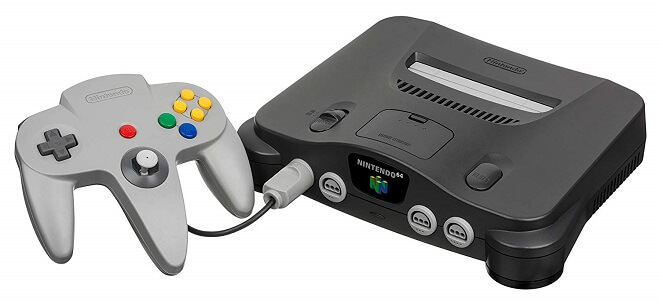
The next two releases from Nintendo and Sony would be so revolutionary in design that we are still feeling the impacts from both of them well into the present.
In 1996, the Nintendo 64, (named for the 64-bit processing), was released to great fanfare. All of your favorite Nintendo characters were now in fully realized 3D. A highlight was Super Mario 64. In it, Mario must make his way through Princess Peach’s castle, experiencing a multitude of vastly different worlds. The sheer scope of this game had many players reeling.
Likewise, The Legend of Zelda Ocarina of Time and Donkey Kong 64 brought back many loveable characters to share the modern gaming stage. Alongside the PlayStation, the Nintendo 64 and the Sega Saturn made up what is known as the fifth console generation.
Not to be outdone, Sony released what is still the best-selling console of all time: the PlayStation 2. Released in 2000, the PS2 has sold over 150 million units. This console brought us hits like Final Fantasy X, Metal Gear Solid 2: Sons of Liberty, and Grand Theft Auto games.
An amazing feature of the PS2, the backward compatibility, allowed for gamers who had an extensive collection of original PlayStation games to be able to play them effortlessly on their new PS2 consoles. This tradition continued well into the present, (albeit a little more limited with other companies like Microsoft, with consoles like Xbox).
PS2 had a lifespan of 13 years, releasing classic games that many of us remember fondly. Luckily for us, we can easily access these titles from the Sony store.
Microsoft and World of WarCraft
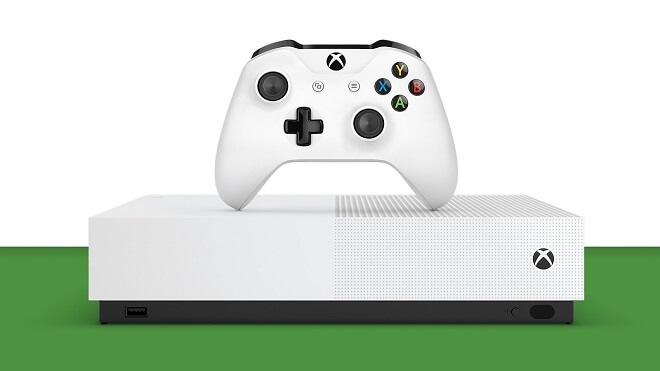
Mostly focusing on PC gaming, Microsoft blew everyone away with releasing their very first console, the Xbox, in 200. With blockbuster hits like Halo revolutionizing multiplayer, Microsoft was not to be trifled with.
They went a step further by introducing Xbox LIVE, their subscription-based online gaming service. This meant you could regularly game with buddies online, buy DLC and access different goodies. In turn, this gave the anticipated release of Halo 2 even more acclaim.
Halo 2 broke sales records and had people funneling onto Xbox LIVE to finally play Halo’s addictive multiplayer online against people a world away. The time for trash talk was over; you now had the chance to put the question to rest: who is the best Halo player you know?
At the same time, Blizzard, the creators of StarCraft, created their most ambitious and popular product yet: World of Warcraft.
It was a massively multiplayer online role-playing game (MMORPG or MMO), where you inhabited the land Azeroth from the Warcraft franchise, leveled up your unique character, did raids, and got some serious loot. It was a smash hit and become a pop culture phenomenon.
The TV comedy South park did an entire episode about WoW, including a fictional weapon called ‘the sword of truth’. Blizzard eventually made the Sword of Truth an actual in-game item. Art imitates art!
The Wii and Big Budgets
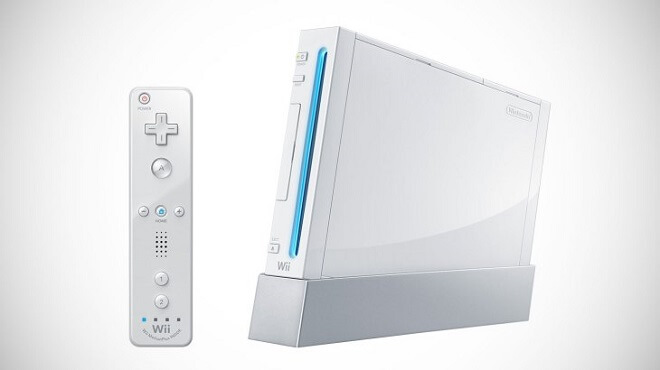
Black Friday.
It’s cold, it’s early, and you need to get a hold of one of the most talked-about consoles ever made; the Nintendo Wii.
“The Wii?” you ask. Yes, the name is a bit…unconventional.
However, it brought a motion-based play to the table. This encouraged players to get off the couch and physically take part in their adventures.
The Legend of Zelda: Twilight Princess had players swinging swords with actual arm motions and Wii Sports playing a myriad of lighthearted sports games.
This era was the start of true big-budget gaming. Millions of dollars were now being spent on the development of games; some were the same budgets as blockbuster Hollywood productions.
For example, Destiny, a first-person shooter by Bungie, allegedly had a budget of almost half a billion dollars! This would take the world of gaming even higher into the cultural zeitgeist. It wasn’t an isolating pastime anymore; it was true pop culture, right alongside movies, music, and TV.
Today

The game industry shows no signs of stopping. Indeed, it seems since the end of the gaming crash in 1985, game developers have had an insatiable hunger to produce consoles and games.
As a gamer, we have never been more privileged. We have our pick of the litter: will it be the Xbox One, Nintendo Switch, PS4, PC, Mac, mobile, or the Wii U? They are even releasing versions of the classic SNES and NES systems, allowing for newer gamers to travel back in time and see what the ‘dark ages’ were like. VR consoles are seemingly the new piece of gaming hardware to look out for and cross platform gaming is the latest in multiplayer tech.
Whichever you choose, look back fondly on the timeline of video game history, and be grateful that Pac-Man had to walk so Kratos could run.
What People Are Saying
A recent survey conducted by tech services firm Globant in collaboration with polling firm YouGov reveals that a significant 52% of gamers in the United States foresee the metaverse as a transformative force in the gaming industry.
The survey aimed to gauge the awareness and sentiments of U.S. gamers regarding the metaverse, a network of interconnected virtual worlds reminiscent of novels like “Snow Crash” and “Ready Player One.”
Among the findings, Meta emerged as the top company associated with the metaverse, according to 73% of respondents. Additionally, 35% expressed comfort with advertising in the metaverse, while 40% were uncomfortable with it. Nearly half of those surveyed would accept advertising if it meant gaining free access to apps, games, or places within the metaverse.
Furthermore, 49% of gamers prioritize “playing” over “earning” in metaverse games, although a substantial portion values a blend of both. Overall, the survey underscores the growing recognition among gamers that the metaverse is poised to reshape the gaming industry, with 41% believing it will have a positive impact.
However, familiarity and understanding of the metaverse remain areas for growth, as only 39% anticipate its maturity in less than five years.
